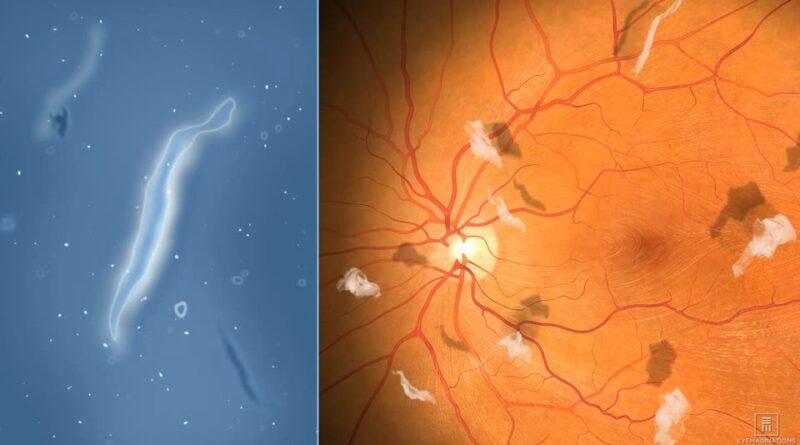What are Eye Floaters?
The scientific name for eye floaters is Muscae Volitantes, Latin for “flying flies.” True to their name, they can be somewhat annoying.
[Please note that this page contains affiliate links. If you choose to purchase after clicking a link, I may receive a commission at no extra cost to you.]
Eye floaters look like tiny worms or transparent blobs floating around your field of vision. And whenever you try to get a closer look, it disappears, only reappearing when you shift your glance. But don’t go rinsing out your eyes. What you are seeing is a common phenomenon known as a floater.
The scientific name for these floaters is Muscae Volitantes, Latin for “flying flies.” True to their name, they can be somewhat annoying. Although they are not a type of bug or any external object, they exist right inside your eyeball.
What are Eye Floaters?
Floaters may seem alive as they move and change shape, but they are not alive. Instead, floaters are tiny objects that cast shadows on the retina, the light-sensitive tissue in the back of your eye.
They may be bits of tissue, clumps of protein, or red blood cells. And because they are suspended within the gel-like liquid within your eyeball, they bounce and shift with movement.
Floaters become more visible the closer to the retina they are. Just as you hold your hand above the light and move closer to the table, the more sharply defined the shadow becomes.
Floaters are more noticeable when looking at bright surfaces like a blank computer screen, snow, or a clear sky. This is because the consistency of the background makes them more distinguishable.
The brighter the light is, the more your pupil contracts. Another similar visual phenomenon that looks like floaters but is unrelated.
Other Types of Eye Floaters
If you may have seen tiny dots of light darting about when looking at a bright blue sky, you have experienced what is known as the Blue Field Entopic Phenomenon. In some ways, this is the opposite of seeing-eye floaters.
Here you do not see shadows but little moving windows that allow light through your retina.
The windows are caused by white blood cells moving through the capillaries along your retina’s surface. These glucosides can be so large that they nearly fill a vein causing a plasma space to open up.
In addition, because the area in front of the white blood cells is more transparent to blue light, red blood cells are usually present in capillaries.
We see a moving dot of light wherever this happens, following the paths of your capillaries and moving in line with your pulse. Under ideal viewing conditions, you might even see what looks like a dark tail following the dot. These are the red blood cells that have bunched up behind the leucocyte.
Eye Floater Science
Some science museums have an exhibit that consists of a screen of blue light, allowing you to see these enabling you to see these blue-sky sprites much more clearly than you usually would.
Well, everybody’s eyes experience these types of effects. However, the number and style vary considerably. In the case of eye floaters, they often go unnoticed as our brain learns to ignore them.
However, numerous arch floaters that interfere with vision may signify a more severe condition requiring immediate medical treatment.
Although most of the time, visual phenomena such as eye floaters and blue-sky sprites are just a gentle reminder that we think we see as much in our biology and minds as in the external world.


